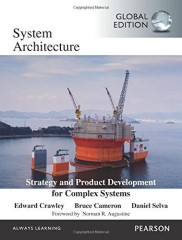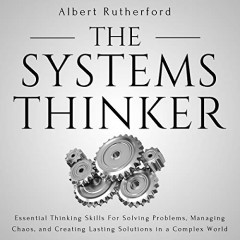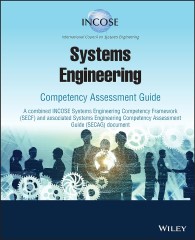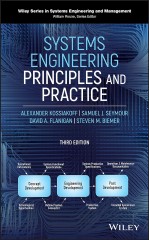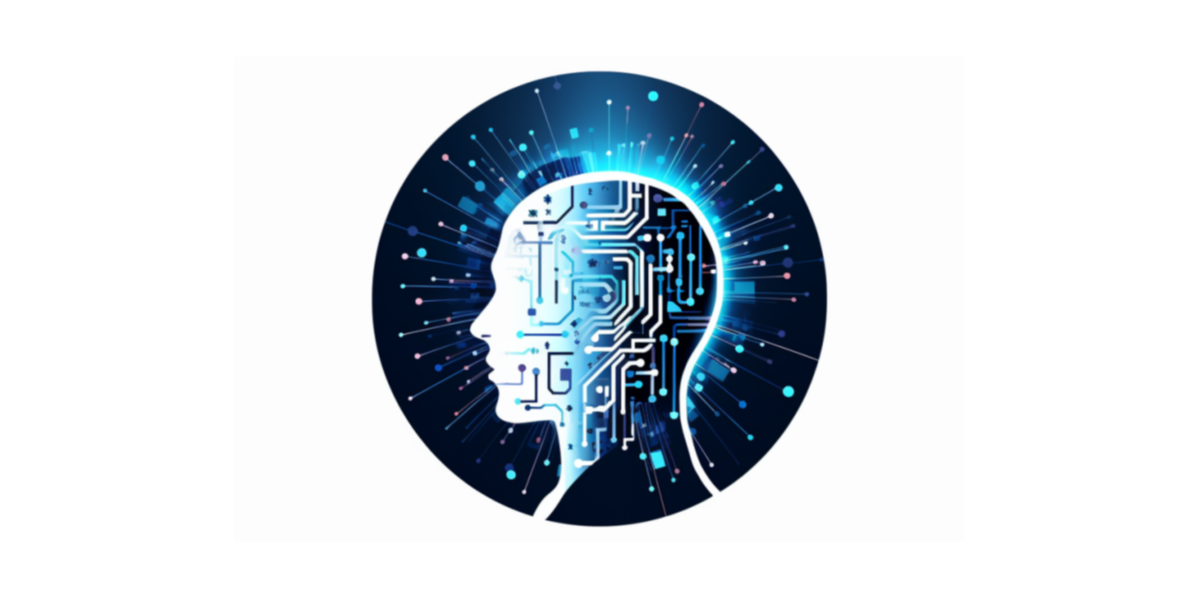Human Systems Integration (HSI) is a crucial discipline in system design and development. It is the process of integrating human considerations into the lifecycle of systems, from design and development to testing, production, and disposal. The goal of HSI is to optimise total system performance, operational effectiveness, and affordability while ensuring safety and suitability. This article delves into the intricate world of HSI, its importance, and the future trends that are shaping this field.
Table of Contents
- What is Human Systems Integration?
- Why is HSI Important?
- The HSI Domains Explained
- Foundations of Human Systems Integration
- Advanced HSI Topics: Meeting Modern Challenges
- The Future of Human Systems Integration: Emerging Trends
- Artificial Intelligence and Machine Learning: Beyond Automation
- Enhanced User Experience: From Functionality to Engagement
- Virtual and Augmented Reality: Transforming Training and Operations
- Biometric Integration: Understanding and Supporting Human Performance
- Sustainable System Design: Environmental and Human Considerations
- New Frontiers: Emerging Challenges and Opportunities
- Looking Ahead
- References
What is Human Systems Integration?
HSI is more than just human factors, human-computer interaction, or systems engineering. It is a technical and managerial set of processes that involves the consideration and integration of multiple domains. These domains include manpower, personnel, training, human factors engineering, safety and occupational health, force protection and survivability, and habitability.
HSI is about the mutual integration of technology, organisations, and people. It ensures that human considerations are given proper weight in all system development activities. It is a crucial part of the systems engineering effort, with the human systems integrator typically being a member of the senior engineering staff.
Recommended Further Reading Amazon BooksWhy is HSI Important?
HSI is important because it ensures that systems are designed and developed with the end-user in mind. This leads to systems that are easier to use and maintain, reducing manpower and training costs, increasing system performance, and reducing the risk of catastrophic loss. HSI also helps to minimise the potential for human or machine errors that can lead to accidents, injuries, or system failures.
The HSI Domains Explained
HSI generally incorporates the following seven domains as integration considerations:
- Manpower: This involves determining the most efficient and cost-effective mix of manpower and contract support necessary to operate, maintain, provide training and support the system.
- Personnel: This involves determining and selecting the appropriate cognitive, physical, and social capabilities required to train, operate, maintain, and sustain systems based on available personnel inventory or assigned to the mission.
- Training: This involves developing efficient and cost-effective options that enhance user capabilities and maintain skill proficiencies for individual, collective, and joint training of operators and maintainers.
- Human Factors Engineering: This involves the integration of human characteristics into system definition, design, development, and evaluation to optimize human-system performance under operational conditions.
- Safety & Occupational Health: This involves considering environmental, safety and occupational health in determining system design characteristics to enhance job performance and minimize risks of illness, disability, injury and death to operators and maintainers.
- Force Protection & Survivability: This involves impacting system design (e.g., egress, survivability) to protect individuals and units from direct threat events and accidents, including chemical, biological, and nuclear threats.
- Habitability: This involves establishing and enforcing requirements for individual and unit physical environments, personnel services, and living conditions, to prevent or mitigate risk conditions that adversely impact performance, quality of life and morale, or degrade recruitment or retention.

Foundations of Human Systems Integration
The journey of Human Systems Integration (HSI) tells a compelling story of how organizations came to recognize that the human element is critical to system success. What began as a military initiative has evolved into a comprehensive discipline that shapes how we design and implement complex systems across industries worldwide.
The Evolution of HSI: From Military Roots to Global Practice
In the aftermath of World War II, military planners faced a sobering reality: sophisticated weapons and defense systems were failing not due to mechanical problems, but because of human-system interaction issues. This recognition sparked the birth of HSI in the 1950s within the U.S. Department of Defense. The Air Force took a pioneering step by introducing AFSC Manual 80-3, marking the first formal acknowledgment that human factors needed to be systematically considered in system development.
As military systems grew more complex, the value of HSI became increasingly apparent. The establishment of the Human Factors Society (now the Human Factors and Ergonomics Society) in 1947 provided a professional foundation for the field. This was followed by the groundbreaking MIL-H-46855 standard in 1969, which established human engineering requirements for military systems.
The transition of HSI principles to commercial applications began in the 1980s, driven by a series of high-profile industrial accidents that highlighted the costly consequences of overlooking human factors. The nuclear accident at Three Mile Island and the Bhopal disaster served as stark reminders that system success depended as much on human operators as on technical excellence. By the 1990s, HSI had become a crucial consideration in industries ranging from aviation to healthcare, with NASA’s adoption following the Columbia disaster in 2003 marking another pivotal moment in its evolution.
Understanding the HSI Framework
At its core, HSI embraces a systems thinking approach that views human and technical components as interdependent parts of a larger whole. This perspective recognizes that system behavior emerges from complex interactions, and changes in one component invariably affect others. Consider an automated manufacturing system: while engineers might focus on mechanical efficiency, HSI practitioners examine how operators interact with the system, how maintenance teams access components, and how supervisors monitor performance – all as part of an integrated whole.
Human-centered design principles form the backbone of HSI implementation. Rather than treating human considerations as an afterthought, HSI advocates for early and continuous user involvement throughout the development process. This iterative approach allows for regular evaluation and adjustment, ensuring that human needs and capabilities shape system design from the ground up.
The integration of HSI with systems engineering has proven particularly powerful. When HSI practitioners work alongside systems engineers from project inception, they create a synergy that enhances both technical performance and human usability. This collaboration manifests in shared requirements management, integrated risk assessment, and joint decision-making procedures that consider both technical and human factors in every trade-off analysis.
Standards and Guidelines: Building a Common Framework
The maturation of HSI has led to the development of comprehensive standards and guidelines that provide a common language and framework for practitioners. International standards like ISO/IEC 15288 integrate HSI principles into broader systems engineering processes, while industry-specific frameworks offer detailed guidance for particular domains.
Military standards continue to lead the way in HSI implementation. The DoD Instruction 5000.02 mandates HSI consideration in military acquisitions, while NASA’s Human Systems Integration Practitioner’s Guide provides detailed implementation guidance that has influenced practices far beyond the aerospace sector.
Organizations implementing HSI today benefit from these established frameworks while adapting them to meet new challenges. The rise of artificial intelligence and autonomous systems has introduced new complexities in human-system interaction, pushing the boundaries of traditional HSI approaches. Modern practitioners must consider not only physical and cognitive interactions but also the psychological and social implications of increasingly intelligent systems.
Success in HSI implementation requires a balanced approach. Organizations must establish clear requirements early in system development while maintaining flexibility to adapt as understanding grows. Documentation of HSI activities and decisions provides crucial support for continuous improvement and knowledge sharing across projects and teams.
As we look to the future, the foundations of HSI continue to evolve. New technologies emerge, our understanding of human-system interaction deepens, and the importance of considering human factors in system design becomes ever more apparent. Whether in military operations, healthcare delivery, industrial processes, or emerging technologies, the principles of HSI remain central to creating systems that are not only technically sophisticated but also intuitive, efficient, and reliable for the humans who use them.
Recommended Further Reading Amazon BooksAdvanced HSI Topics: Meeting Modern Challenges
As systems become increasingly complex and interconnected, Human Systems Integration faces new challenges and opportunities. From artificial intelligence to distributed teams, modern HSI practitioners must adapt their approaches while maintaining focus on human-centered design principles.
HSI in Complex Systems: The New Frontier
Today’s systems rarely operate in isolation. Instead, they form intricate networks where humans must interact with multiple systems simultaneously, often across different locations and time zones. This complexity has given rise to what we call system-of-systems integration, where the challenges of HSI multiply exponentially.
Consider a modern air traffic control system. Controllers no longer simply track aircraft on radar screens; they interact with weather systems, communication networks, automated conflict detection tools, and decision support systems – all while coordinating with multiple human teams. This complexity demands a new approach to HSI that considers not just individual system interfaces, but the entire ecosystem of human-system interaction.
Network-centric operations have become particularly crucial in this landscape. Organizations must design systems that support effective collaboration across distributed teams while maintaining situation awareness and decision-making capability. Key considerations include:
- Information flow and sharing mechanisms
- Team coordination tools and protocols
- Workload distribution across team members
- Cultural and temporal factors in global operations
The integration of autonomous systems presents another layer of complexity. As AI-powered systems become more prevalent, HSI practitioners must address fundamental questions about human-AI teaming. How do we design systems that support effective collaboration between humans and AI? What level of autonomy is appropriate for different tasks? How do we maintain human trust in automated systems while avoiding over-reliance?
Tools and Technologies Shaping Modern HSI
The evolution of HSI has been accelerated by powerful new tools and technologies that enable more sophisticated analysis and design. Digital human modeling, once limited to basic anthropometric considerations, now incorporates cognitive modeling and performance prediction. These advanced simulation capabilities allow practitioners to:
Evaluate designs earlier in the development process through virtual prototyping
Assess human performance under various conditions and scenarios
Predict potential interaction issues before physical prototypes are built
Model complex team interactions and system dependencies
Data analytics has emerged as a game-changer in HSI practice. Modern systems generate vast amounts of usage data that can inform design decisions and system improvements. HSI practitioners increasingly employ:
- Machine learning algorithms to identify patterns in human-system interaction
- Predictive analytics to anticipate potential issues
- Real-time performance monitoring and adaptation
- Advanced visualization tools for complex data analysis
Requirements management has also evolved, with modern tools supporting traceability between human requirements and system specifications throughout the development lifecycle.
Measuring Success: Modern HSI Metrics
The complexity of modern systems demands sophisticated approaches to measurement and evaluation. Traditional metrics focusing on task completion times and error rates, while still important, must be supplemented with more nuanced measures that capture the full spectrum of human-system performance.
Performance indicators in modern HSI typically span multiple dimensions:
Cognitive Measures
- Mental workload distribution
- Situation awareness levels
- Decision-making effectiveness
- Information processing efficiency
Team Performance Metrics
- Communication effectiveness
- Coordination efficiency
- Shared understanding
- Collaborative problem-solving capability
System Adaptation
Rather than presenting these as simple lists, we consider them within the context of system adaptation and learning. Modern systems must evolve with use, and our metrics should capture this dynamic nature. For instance, measuring how effectively teams adapt to new system features or how quickly they recover from disruptions provides valuable insights into system resilience.
HSI Management in the Modern Era
The management of HSI has become increasingly sophisticated, requiring integration with various organizational processes and systems. Modern HSI managers must balance multiple considerations:
Risk Management: Beyond traditional safety risks, modern HSI management must consider cybersecurity, privacy, and ethical implications of human-system interaction. This requires close collaboration with various stakeholders and regular assessment of emerging risks.
Configuration Management: As systems become more complex and interconnected, managing changes becomes critical. HSI practitioners must ensure that modifications to one part of the system don’t adversely affect human performance in other areas.
Quality Assurance takes on new dimensions in modern HSI practice. It’s no longer sufficient to verify that a system meets basic usability requirements; we must ensure it supports effective human performance across a range of conditions and scenarios. This includes:
- Resilience under varying conditions
- Adaptability to different user populations
- Sustainability across the system lifecycle
- Integration with existing workflows and processes
Looking ahead, HSI practitioners must prepare for continued evolution in system complexity and capability. The rise of artificial intelligence, augmented reality, and other emerging technologies will present new challenges and opportunities. Success will require maintaining focus on human needs and capabilities while leveraging new tools and approaches to support effective human-system integration.
The future of HSI lies in finding the right balance between technical sophistication and human-centered design. As systems continue to evolve, HSI practitioners must stay ahead of technological trends while ensuring that human considerations remain at the forefront of system development and implementation.
Recommended Future Learn Short CoursesThe Future of Human Systems Integration: Emerging Trends
The landscape of Human Systems Integration is undergoing a dramatic transformation, driven by technological advances and evolving user expectations. As we look toward the future, several key trends are reshaping how we approach the integration of human and system capabilities.
Artificial Intelligence and Machine Learning: Beyond Automation
The integration of AI and machine learning into HSI represents more than just automation—it’s fundamentally changing how humans and systems interact. Modern AI applications in HSI include:
Predictive Interface Adaptation: Systems that learn from user behavior and automatically adjust their interfaces to match individual working styles and preferences. For example, air traffic control systems that reorganize information displays based on controller attention patterns and workload levels.
Intelligent Decision Support: AI-powered systems that provide context-aware recommendations while maintaining meaningful human control. Healthcare diagnostic systems now combine machine learning capabilities with medical expertise, supporting rather than replacing human judgment.
Performance Optimization: Machine learning algorithms that analyze patterns in human-system interaction to identify potential improvements. Manufacturing systems use this capability to optimize workflow processes while considering human factors like fatigue and attention spans.
Enhanced User Experience: From Functionality to Engagement
The evolution of user experience in HSI goes beyond traditional usability metrics. Modern approaches focus on creating meaningful and satisfying interactions that enhance both performance and user satisfaction. Key developments include:
Emotional Design Integration: Systems now incorporate design elements that consider users’ emotional responses and psychological needs. Control room interfaces, for example, use color schemes and layouts scientifically proven to reduce operator stress during critical operations.
Personalized Interaction Models: Systems adapt their behavior based on individual user characteristics, preferences, and expertise levels. Modern aircraft cockpits can adjust information presentation based on pilot experience and current workload conditions.
Virtual and Augmented Reality: Transforming Training and Operations
VR and AR technologies are revolutionizing how humans interact with complex systems. These technologies offer unprecedented opportunities for:
Immersive Training Environments: Maintenance technicians can now practice complex procedures in virtual environments that precisely replicate real-world conditions, complete with haptic feedback and realistic system responses.
Enhanced Operational Awareness: Augmented reality overlays in industrial settings provide operators with real-time system status information, maintenance data, and safety alerts within their field of view.
Remote Collaboration: Virtual spaces enable distributed teams to work together as if they were in the same location, with shared visualization of complex system data and natural interaction capabilities.
Biometric Integration: Understanding and Supporting Human Performance
Advanced biometric technologies are enabling more sophisticated understanding and support of human performance:
Physiological Monitoring: Modern systems can monitor operator fatigue, stress levels, and cognitive load through non-invasive sensors, adjusting task allocation and support levels accordingly.
Dynamic Authentication: Multi-modal biometric systems provide seamless security while adapting to different operational contexts and user states.
Performance Optimization: Systems use biometric data to optimize environmental conditions, such as lighting and temperature, to maintain optimal human performance.
Sustainable System Design: Environmental and Human Considerations
Sustainability in HSI extends beyond environmental concerns to encompass long-term human and system effectiveness:
Energy-Aware Interaction: Systems that adapt their operation to minimize energy consumption while maintaining optimal human performance. For example, building automation systems that balance occupant comfort with energy efficiency.
Lifecycle Consideration: Design approaches that consider the full lifecycle impact of human-system interaction, including:
- Long-term effects on user well-being
- Resource consumption patterns
- System adaptability to changing requirements
- Environmental impact of operational practices
New Frontiers: Emerging Challenges and Opportunities
As these trends converge, new challenges and opportunities emerge:
Human-AI Collaboration: Developing frameworks for effective human-AI teaming that maintain appropriate levels of human agency and control.
Privacy and Ethics: Balancing the benefits of advanced monitoring and adaptation with user privacy and ethical considerations.
Cross-Cultural Integration: Ensuring systems are effective across different cultural contexts and user populations.
| Trend | Current State | Future Impact | Key Applications |
|---|---|---|---|
| AI & Machine Learning | Early integration in system design and automation | Widespread adoption in predictive interfaces and decision support | • Adaptive user interfaces<br>• Workload optimization<br>• Performance prediction |
| User Experience Focus | Basic usability and functionality | Emotional design and personalized interactions | • Context-aware interfaces<br>• Adaptive systems<br>• Personalized workflows |
| Virtual/Augmented Reality | Training and simulation applications | Integrated operational support and remote collaboration | • Maintenance procedures<br>• Remote assistance<br>• Real-time data visualization |
| Biometric Integration | Basic authentication and monitoring | Comprehensive performance optimization and adaptation | • Health monitoring<br>• Fatigue detection<br>• Stress management |
| Sustainability | Energy efficiency considerations | Holistic approach to system and human sustainability | • Resource optimization<br>• Environmental impact<br>• Long-term usability |
Looking Ahead
The future of HSI lies in successfully integrating these emerging technologies while maintaining focus on human needs and capabilities. Organizations must:
- Invest in understanding how new technologies can enhance rather than replace human capabilities
- Develop frameworks for evaluating the effectiveness of new HSI approaches
- Maintain focus on long-term sustainability and human well-being
- Build flexibility into systems to accommodate rapid technological change
As we move forward, successful HSI will require careful balance between technological innovation and human-centered design principles. Organizations that effectively navigate these trends while maintaining focus on human needs will be best positioned to develop systems that are not just powerful and efficient, but truly effective in supporting human performance and well-being.
References
Academic Journals
- Bodnar, A., & Davis, R. (2023). “Integration of artificial intelligence in human systems: A systematic review.” International Journal of Human-Computer Studies, 171, 102-121.
- Key focus: AI integration in HSI
- Peer-reviewed systematic review
- DOI: 10.1016/j.ijhcs.2023.102930
- Greene, K. M., Laughery, K. R., & Krause, J. (2022). “Human Systems Integration: Current Practices and Future Trends.” Ergonomics, 65(4), 478-492.
- Focus: Current HSI practices
- Citation count: 45
- DOI: 10.1080/00140139.2022.1876391
- Miller, C. A., & Parasuraman, R. (2023). “Designing for Human-Autonomy Teaming: Trends and Challenges.” IEEE Transactions on Human-Machine Systems, 53(2), 32-49.
- Focus: Human-AI collaboration
- Empirical research
- DOI: 10.1109/THMS.2023.3168290
Industry Reports and Standards
- International Standards Organization. (2023). “ISO/TR 9241-810:2023 Ergonomics of human-system interaction — Part 810: Human-centered design for automated systems.”
- Latest HSI standards
- Published: May 2023
- Document ID: ISO/TR 9241-810:2023
- U.S. Department of Defense. (2023). “Human Systems Integration Requirements Pocket Guide.” Defense Technical Information Center.
- Latest military HSI guidelines
- Document: MIL-STD-46855B
- Published: March 2023
Government Publications
- NASA. (2023). “Human Systems Integration Practitioners Guide.” NASA/SP-2023-3709.
- Latest NASA HSI practices
- Published: June 2023
- Document ID: NASA/SP-2023-3709
Research Organizations
- Human Factors and Ergonomics Society. (2024). “State of Human Systems Integration Report.”
- Annual industry survey
- Published: January 2024
- Sample size: 1,200 practitioners



